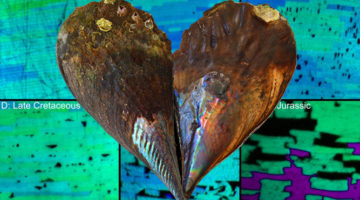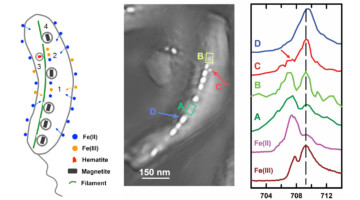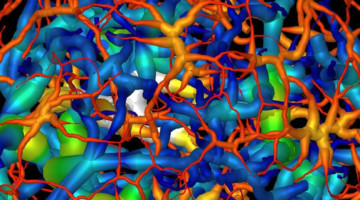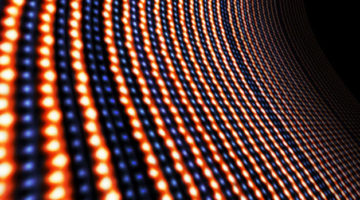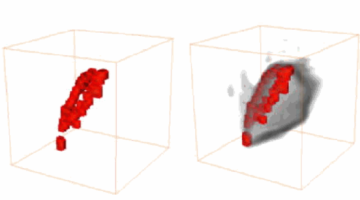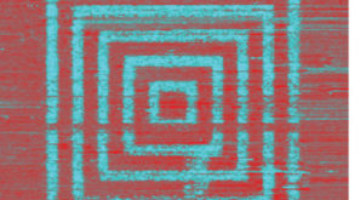Researchers have shown that the thickness of the nacre, or mother-of-pearl, that lines the insides of mollusk shells can be used to estimate ocean temperatures as far back as the early Jurassic period. X-ray studies of modern and ancient shells help establish the method’s feasibility. Read more »
ALS Work Using Microscopy/Imaging
These techniques use the light-source beam to obtain pictures with fine spatial resolution of the samples under study and are used in diverse research areas such as cell biology, lithography, infrared microscopy, radiology, and x-ray tomography.
Ptychography of a Bacterium’s Inner Compass
Magnetotactic bacteria (MTB) synthesize chains of magnetic nanocrystals (magnetosomes) that interact with the Earth’s magnetic field like an inner compass needle, simplifying their search for optimum environments. Ptychographic spectra of magnetosomes from a marine MTB provides insight into how these inner compasses form. Read more »
GE Aviation Delves into Advanced Materials at the ALS
Developing ceramic matrix composites (CMCs) to replace the metal alloys traditionally used in jet engines has been a goal for the aviation industry for decades. For more than a year, GE Aviation has used the tomography capabilities at ALS Beamline 8.3.2 to gain insight into their CMC materials, guiding their engineering and design efforts. Read more »![]()
Mapping the Migration of Genetic Material
A powerful soft x-ray microscope captures tomographic images of the genetic material in the nuclei of nerve cells at different stages of maturity. The detailed 3D visualizations show an unexpected connectivity in the genetic material and provide a new understanding of a cell’s evolving architecture. Read more »![]()
![]()
When Rocket Science Meets X-Ray Science
Scientists at the Department of Energy’s Lawrence Berkeley National Laboratory (Berkeley Lab) and NASA are using x-rays to explore, via 3D visualizations, how the microscopic structures of spacecraft heat shield and parachute materials survive extreme temperatures and pressures, including simulated atmospheric entry conditions on Mars. Read more »
New Multiferroic Material for Ultralow-Power Electronics
Scientists paired ferroelectric and ferrimagnetic materials so that their alignment can be controlled with a small electric field at near room temperatures, a major step in the development of ultralow-power microprocessors, storage devices, and next-generation electronics. Read more »![]()
![]()
3D Visualization of the Behavior of Grease Additives
Lubricants help keep civilization running smoothly, but is there room for improvement? With the goal of increasing the life span and lowering the costs of all kinds of mechanical and biological systems, researchers used x-ray microtomography to visualize the behavior of grease additives under working conditions. Read more »
3-D Imaging Technique Maps Migration of DNA-carrying Material at the Center of Cells
Scientists have mapped the reorganization of genetic material that takes place when a stem cell matures into a nerve cell. Detailed 3-D visualizations show an unexpected connectivity in the genetic material in a cell’s nucleus, and provide a new understanding of a cell’s evolving architecture. Read more »
A Conscious Coupling of Magnetic and Electric Materials
Scientists have successfully paired ferroelectric and ferrimagnetic materials so that their alignment can be controlled with a small electric field at near room temperatures, an achievement that could open doors to ultralow-power microprocessors, storage devices and next-generation electronics. Read more »
Molecular Switch Triggers Bacterial Pathogenicity
Using an array of high-powered x-ray imaging techniques at the ALS, scientists have revealed for the first time the molecular steps that turn on bacteria’s pathogenic genes. The study could open up new avenues in the development of drugs to prevent or treat bacterial infection. Read more »![]()
![]()
- « Previous Page
- 1
- …
- 14
- 15
- 16
- 17
- 18
- 19
- Next Page »
